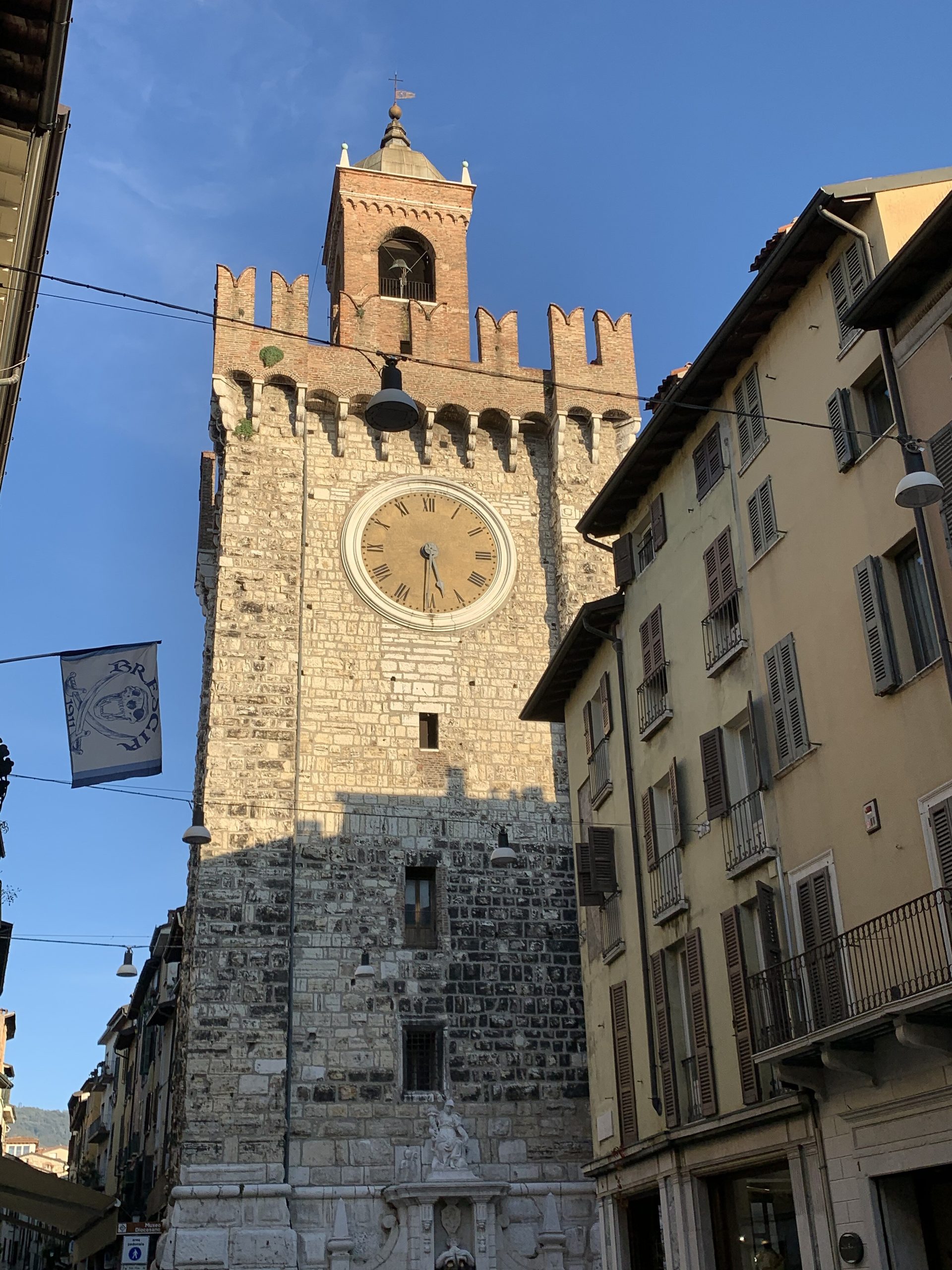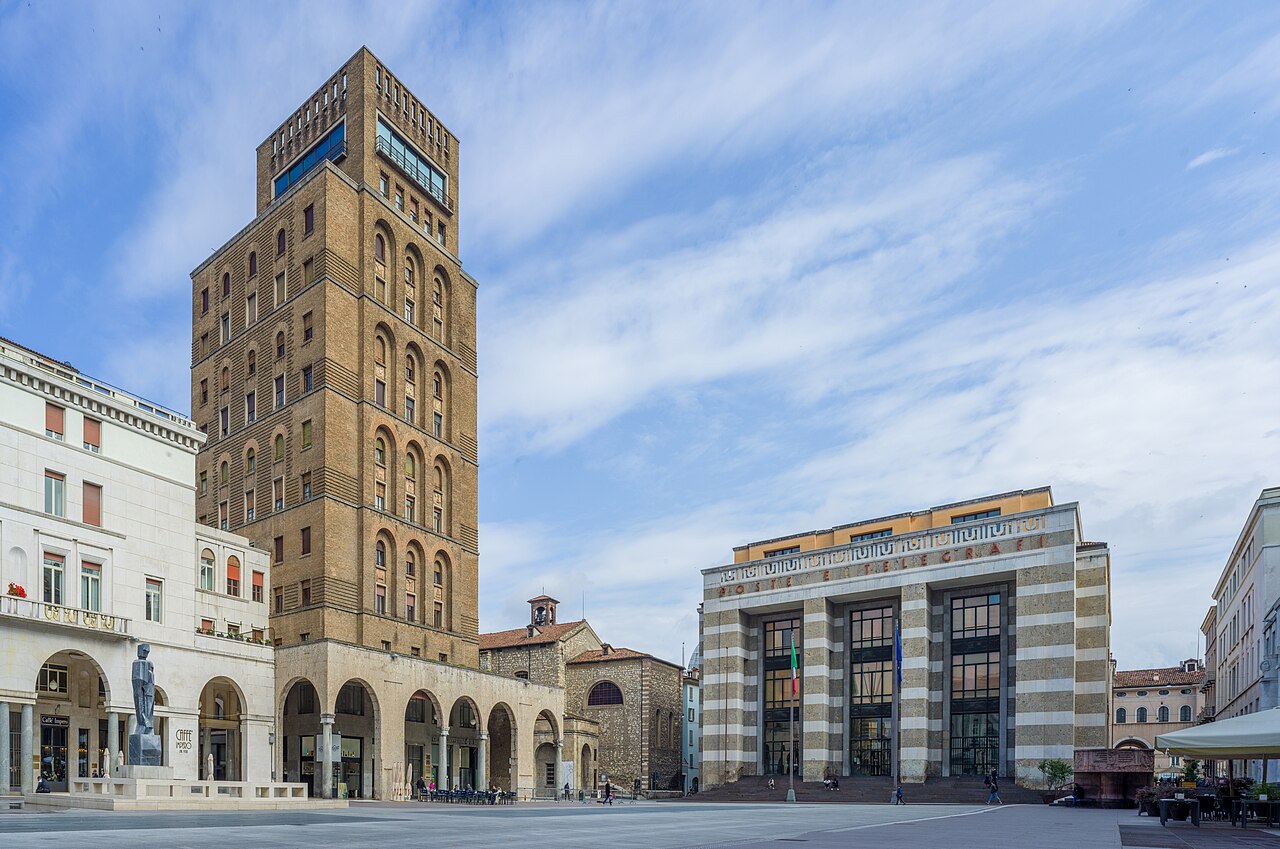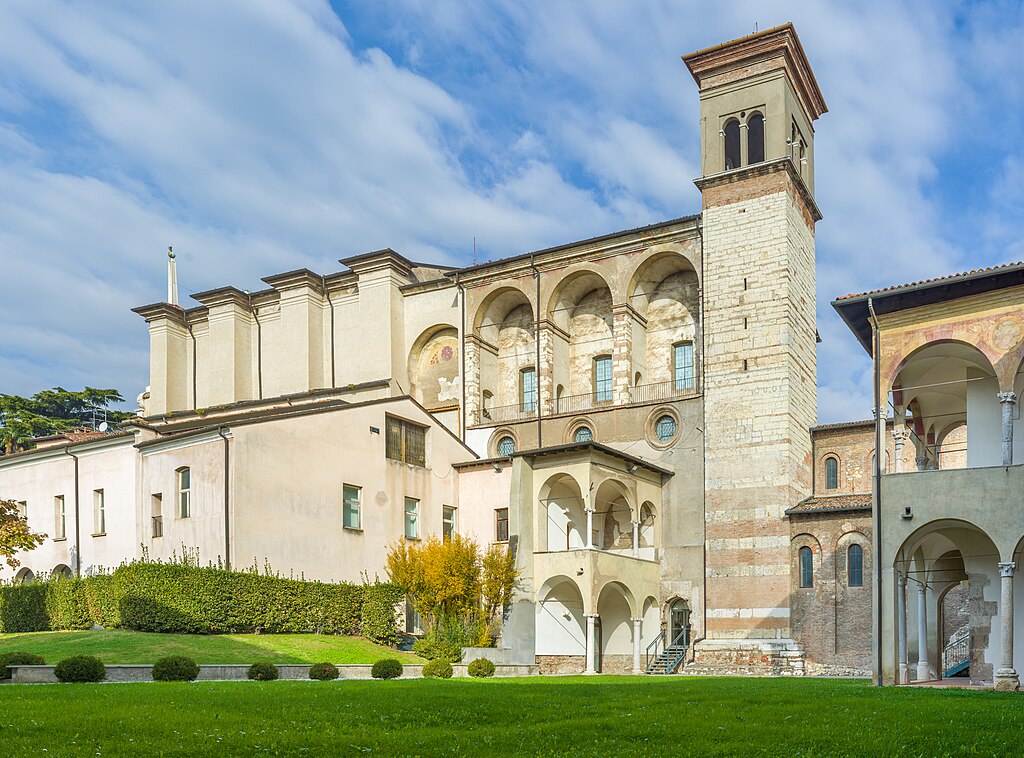Brescia, Italy: The Ultimate Travel Guide 2025

Brescia, nestled in the region of Lombardy in northern Italy, is a city that balances industrial might with a rich cultural heritage. Located at the foot of the Alps and close to both Lago di Garda and Lago d'Iseo, it serves as both a vibrant urban hub and a gateway to some of northern Italy's most scenic landscapes. While it's often overlooked by international tourists in favor of nearby Milan or Verona, Brescia offers an authentic experience, with bustling piazzas, a well-preserved historic center, and a strong local character.
Legacies of Brescia's past include significant Roman ruins, two cathedrals and a vast medieval castle. As a result, the town is filled with gaggles of kids on school excursions (if you're here during term time, you're bound to encounter them). Founded over 3,200 years ago, Brescia has been an important regional centre since pre-Roman times. Its old town contains the best-preserved Roman public buildings in northern Italy and numerous monuments, among these the medieval castle, the Old and New Cathedral, the Renaissance Piazza della Loggia, and the rationalist Piazza della Vittoria. The density of historical landmarks makes Brescia an engaging and educational destination, ideal for anyone interested in art, architecture, or archaeology.
Brescia's location also makes it an excellent base for exploring the Lombardy region. To the northwest lies the tranquil and underrated Lago d'Iseo, a peaceful retreat with charming lakeside towns and natural beauty. Head northeast, and you'll reach the bustling shores of Lago di Garda, Italy's largest and most popular lake, offering everything from water sports to historic villas. Whether you're after lakeside relaxation, alpine excursions, or urban culture, Brescia is a strategic and rewarding place to begin your northern Italian journey.
Table of Contents
- History of Brescia
- Brescia in Ancient Times: Pre-Roman Origins and Roman Development
- Brescia in the Middle Ages: From Lombard Duchy to Free Commune
- Brescia in the Renaissance and Early Modern Period
- Brescia in the 19th Century: Revolution and Unification
- Brescia in the 20th and 21st Centuries: Industry, Resistance, and Renewal
- 12 Best places to See in Brescia
- Torre della Pallata
- Palazzo della Loggia
- Piazza della Vittoria
- Duomo Vecchio, Brescia
- Broletto Palace
- Duomo Nuovo
- Santa Maria della Carità
- Brescia Castle
- Piazza del Foro and Roman Theater
- Brixia Parco Archeologico
- Civici Musei d'Arte e Storia Santa Giulia
- Santa Giulia Museum
- 12 Best Day Trips from Brescia
- Where to Stay in Brescia
- Best Time to Visit Brescia
- Brescia in Spring: March to May
- Brescia in Summer: June to August
- Brescia in Autumn: September to November
- Brescia in Winter: December to February
- How to get to Brescia
History of Brescia
Brescia in Ancient Times: Pre-Roman Origins and Roman Development
Brescia’s history begins over 3,200 years ago, making it one of the oldest continuously inhabited cities in northern Italy. Originally settled by the Cenomani, a Gallic tribe, the area became an important regional center even before the Roman conquest. By the 1st century BCE, Brescia—then known as Brixia—was officially incorporated into the Roman Republic. Under Roman rule, the city prospered, developing a grid layout, aqueducts, temples, baths, and a forum. Many of these structures, such as the Capitolium and the Roman theatre, remain among the best-preserved examples of Roman public buildings in the region.
Brescia in the Middle Ages: From Lombard Duchy to Free Commune
Following the fall of the Western Roman Empire, Brescia became part of the Ostrogothic and later the Lombard Kingdom. It served as a key duchy during Lombard rule and retained its strategic and military importance. The arrival of Charlemagne and incorporation into the Frankish Empire introduced new feudal structures. By the 12th century, Brescia emerged as a self-governing commune, participating in the Lombard League’s resistance against imperial power. The city expanded its walls and built churches, monasteries, and a fortified castle, which still dominates the skyline today. Despite internal factionalism and external threats, Brescia maintained a level of autonomy throughout much of the medieval era.
Brescia in the Renaissance and Early Modern Period
During the Renaissance, Brescia came under the rule of the Republic of Venice in 1426, a period that lasted nearly four centuries. Venetian governance brought stability, economic development, and a flourishing of the arts. The city saw the construction of elegant palaces and piazzas, such as Piazza della Loggia, and a blending of Gothic and early Renaissance styles in its architecture. However, Brescia also faced hardship during this period, particularly in 1512, when it suffered brutal sacking by French troops during the War of the League of Cambrai. Despite this, it remained an important urban center in the Venetian mainland territories.
Brescia in the 19th Century: Revolution and Unification
The decline of the Venetian Republic in 1797 brought Brescia into the orbit of Napoleonic France and, later, Austrian rule. The city became a hotbed of revolutionary sentiment in the 19th century, playing a pivotal role during the Italian unification movement. In 1849, Brescia famously resisted Austrian occupation in a ten-day uprising, earning the nickname Leonessa d’Italia—“the Lioness of Italy.” This heroic act became a symbol of national pride. By 1859, the city was annexed into the Kingdom of Sardinia, soon to become the Kingdom of Italy.
Brescia in the 20th and 21st Centuries: Industry, Resistance, and Renewal
In the 20th century, Brescia became one of Italy’s industrial powerhouses, known particularly for its metallurgy, firearms production, and mechanical engineering. During World War II, the city suffered from bombing raids and was an active center of partisan resistance against Fascist and Nazi forces. In the postwar decades, Brescia rapidly modernized while preserving its rich architectural heritage. Today, it is a major cultural, economic, and transportation hub in northern Italy. The city’s dual identity—industrial dynamo and historic treasure—continues to define its role in the modern Italian landscape.
Visiting Brescia for the first time and wondering what are the top places to see in the city? In this complete guide, I share the best things to do in Brescia on the first visit. To help you plan your trip, I have also included an interactive map and practical tips for visiting!
This website uses affiliate links which earn a small commission at no additional cost to you.
12 Best places to See in Brescia
This complete guide to Brescia not only tells you about the very best sights and tourist attractions for first-time visitors to the city but also provide insights into a few of our personal favorite things to do.
This is a practical guide to visiting the best places to see in Brescia and is filled with tips and info that should answer all your questions!
Torre della Pallata

Location: Torre della Pallata, Via della Pace, Brescia, Province of Brescia, Italy | Distance: 0.3km
Visiting Torre della Pallata
Palazzo della Loggia

Location: Palazzo della Loggia, Piazza della Loggia, Brescia, Province of Brescia, Italy | Distance: 0.6km
Visiting Palazzo della Loggia
Piazza della Vittoria

Location: Piazza della Vittoria, Brescia, Province of Brescia, Italy | Distance: 0.7km
Visiting Piazza della Vittoria
Duomo Vecchio, Brescia

Location: Duomo Vecchio, Piazza Paolo VI, Brescia, Province of Brescia, Italy | Distance: 0.8km
Visiting Duomo Vecchio, Brescia
Broletto Palace

Location: Piazza Paolo VI, Brescia, Province of Brescia, Italy | Distance: 0.8km
Visiting Broletto Palace
Duomo Nuovo

Location: Cathedral of Santa Maria Assunta, Duomo Nuovo, Piazza Paolo VI, Brescia, Province of Brescia, Italy | Hours: 7.30am-noon & 4-7pm Mon-Sat, 8am-1pm & 4-7pm Sun | Distance: 0.8km
Visiting Duomo Nuovo
Santa Maria della Carità

Location: Santa Maria della Carità, Via dei Musei, Brescia, Province of Brescia, Italy | Distance: 1.0km
Visiting Santa Maria della Carità
Brescia Castle

Location: Castle of Brescia, Via del Castello, Brescia, Province of Brescia, Italy | Hours: 8am-8pm | Distance: 1.0km
Visiting Brescia Castle
Piazza del Foro and Roman Theater

Location: Piazza del Foro, Brescia, Province of Brescia, Italy | Distance: 1.1km
Visiting Piazza del Foro and Roman Theater
Brixia Parco Archeologico

Location: Parco archeologico di Brixia romana, Via dei Musei, Brescia, Province of Brescia, Italy | Hours: 9am-5pm Tue-Fri, 10am-6pm Sat & Sun | Price: adult/reduced €8/6 | Website | Distance: 1.1km
Visiting Brixia Parco Archeologico
Civici Musei d'Arte e Storia Santa Giulia

Location: Museo di Santa Giulia, Via dei Musei, Brescia, Province of Brescia, Italy | Hours: 9am-5pm Tue-Fri, 10am-9pm Sat, 10am-6pm Sun | Price: adult/reduced €10/7.50, combined ticket incl Tempio Capitolino €15/10 | Website | Distance: 1.3km
Visiting Civici Musei d'Arte e Storia Santa Giulia
Santa Giulia Museum

Location: Santa Giulia Museum, Via dei Musei, Brescia, Province of Brescia, Italy | Price: Adult €15 (Can be combined with Brixia Roman Site €19) | Website | Distance: 1.4km
Visiting Santa Giulia Museum
Best Day Trips from Brescia
A day trip from Brescia offers the perfect opportunity to escape the urban rhythm and discover the surrounding region's charm. Whether you're drawn to scenic countryside, historic villages, or cultural landmarks, the area around Brescia provides a variety of easy-to-reach destinations ideal for a one-day itinerary. If you are looking to rent a car in Italy I recommend having a look at Discover Cars, first, as they compare prices and review multiple car rental agencies for you.
Bonoris Castle

Location: Castello Bonoris Piazza Santa Maria, 36 25018 Montichiari BS Italy | Hours: Saturday 3:00pm-7pm; Sun 10:00am-12:00pm – 3:00pm-7:00pm (from May to October) (Last entrance 40 minutes before closing time). Closed on 1 April, 1 May, and 15 August. | Price: € 8.00. Combined ticket with admission to Lechi Museum | Website | Distance: 20.1km
Visiting Bonoris Castle
Padernello Castle

Location: Castello di Padernello Via Cavour, 1 25022 Padernello BS Italy | Hours: Tue-Fri: guided tours 9:00am-12:00pm/2:30pm-5:30pm; Sat 2:30pm-5:30pm; Sun 2:30pm-6:30pm. Last entrance one hour before closing time. Closed in August. | Price: adults: € 7.50 | Website | Distance: 26.6km
Visiting Padernello Castle
Bergamo

Visiting Bergamo
Verona

Visiting Verona
Milan

Visiting Milan
Parma

Visiting Parma
Como

Visiting Como
Vicenza

Visiting Vicenza
Modena

Visiting Modena
Padova

Visiting Padova
Ferrara

Visiting Ferrara
Bologna

Visiting Bologna
Where to Stay in Brescia
Brescia offers a diverse range of accommodations to suit various preferences and budgets, from historic charm in the city center to modern comforts near transportation hubs.
For travelers seeking a luxurious stay in the heart of Brescia, Hotel Vittoria stands out. This five-star hotel boasts elegant rooms and is situated close to major attractions like Piazza della Loggia and the Duomo. Another excellent option is Centro Paolo VI, a unique hotel set in a historic building with beautiful gardens, offering a peaceful retreat within walking distance of the city’s main sights.
If proximity to the train station is a priority, Hotel Igea is a convenient choice. Located just steps away from Brescia Centrale, it provides easy access for travelers arriving by train. For those looking for modern amenities and a comfortable stay, AC Hotel Brescia by Marriott offers contemporary rooms and is a short drive from the city center, making it suitable for both business and leisure travelers.
For visitors interested in exploring the surrounding areas, Villa Fenaroli Palace Hotel offers a luxurious experience in a historic villa just outside Brescia. This hotel combines classic architecture with modern comforts and is ideal for those planning to visit the Franciacorta wine region or the nearby lakes.
Each of these accommodations provides a unique experience, allowing visitors to choose the one that best fits their travel needs while enjoying the rich culture and history that Brescia has to offer.
Using the our Hotel and Accomodation map, you can compare hotels and short-term rental accommodations in Brescia. Simply insert your travel dates and group size, and you’ll see the best deals for your stay.
Brescia Accommodation Map
Best Time to Visit Brescia
Brescia in Spring: March to May (Best)
Spring is the best time to visit Brescia. As the city warms up, average temperatures rise from around 13°C in March to 22°C in May, making it ideal for exploring the Roman ruins, piazzas, and castle grounds on foot. The city feels especially vibrant during this season, with blooming gardens and lively outdoor cafés. A major spring highlight is the Mille Miglia, a historic car race that begins and ends in Brescia, attracting crowds of enthusiasts and vintage automobiles from around the world. The combination of pleasant weather, cultural energy, and festive atmosphere makes spring the most rewarding time of year to experience Brescia.
Brescia in Summer: June to August
Summer in Brescia is hot and busy, with temperatures often exceeding 30°C in July and August. The long days and frequent festivals make it an exciting time to visit, though midday heat can be intense. The city hosts open-air concerts, food fairs, and events in its historic center and surrounding areas. Many locals head to nearby Lake Garda or the mountains for respite, but Brescia remains active, especially in the evenings when temperatures drop and nightlife picks up. For those who don’t mind the heat, summer offers a dynamic and colorful urban experience.
Brescia in Autumn: September to November
Autumn brings cooler, more comfortable weather and a slower pace to Brescia. Temperatures range from about 25°C in early September to 10°C by November. This is a great season for enjoying the city’s museums, architecture, and nearby wine country without the crowds. Food festivals and harvest events are common in the surrounding region, especially in the Franciacorta area, known for its sparkling wines. The city’s historic streets take on a charming atmosphere with the changing leaves and gentle light, making autumn an appealing time for relaxed cultural travel.
Brescia in Winter: December to February
Winter in Brescia is cool and often misty, with temperatures ranging from 0°C to 8°C. While snow is rare, the chill in the air brings out the cozy side of the city. December is particularly atmospheric thanks to Christmas markets and festive decorations in Piazza della Loggia and other historic spots. Though the season is quieter in terms of tourism, winter is ideal for museum visits, hearty Lombard cuisine, and enjoying the city at a slower, more contemplative pace. January and February are the most peaceful months, suited to those who prefer fewer crowds and lower travel costs.
Annual Weather Overview
- January 8°C 50°F
- February 10°C 54°F
- March 15°C 63°F
- April 18°C 68°F
- May 23°C 76°F
- June 29°C 87°F
- July 29°C 93°F
- August 29°C 89°F
- September 25°C 81°F
- October 20°C 72°F
- November 12°C 57°F
- December 7°C 49°F
How to get to Brescia
Travelling to Brescia by Plane: While Brescia boasts its airport for domestic flights, for a broader array of international choices, Milan Bergamo Airport (51 km) or Verona Airport (62 km) serve as convenient alternatives. The city is also well-connected by train, facilitating easy access to destinations around Lake Garda, including Desenzano del Garda and Sirmione, along with Milan and other major Italian cities.
Travelling to Brescia by Car: Brescia stands as a prominent city linked by the A4 motorway, extending from Turin to Venice. Positioned approximately an hour and a half westward is Milan, while to the east, Verona (1 hour) and Padova (around 2 hours) are viable options for day-trips. If you are looking to rent a car in Italy I recommend having a look at Discover Cars, first, as they compare prices and review multiple car rental agencies for you.
Navigating the city centre is most convenient on foot, especially in pedestrianized areas like Piazza della Loggia. Additionally, a Metro train system operates efficiently, providing a seamless connection to the train station, a journey that would otherwise involve a 15-minute walk.


